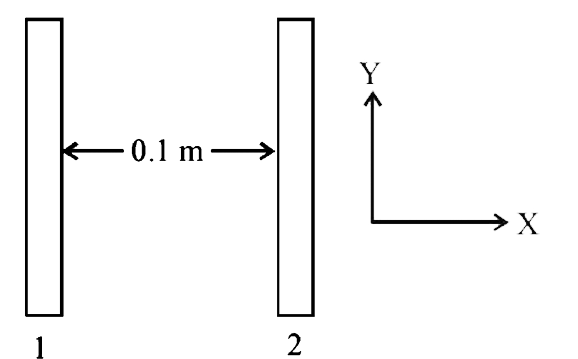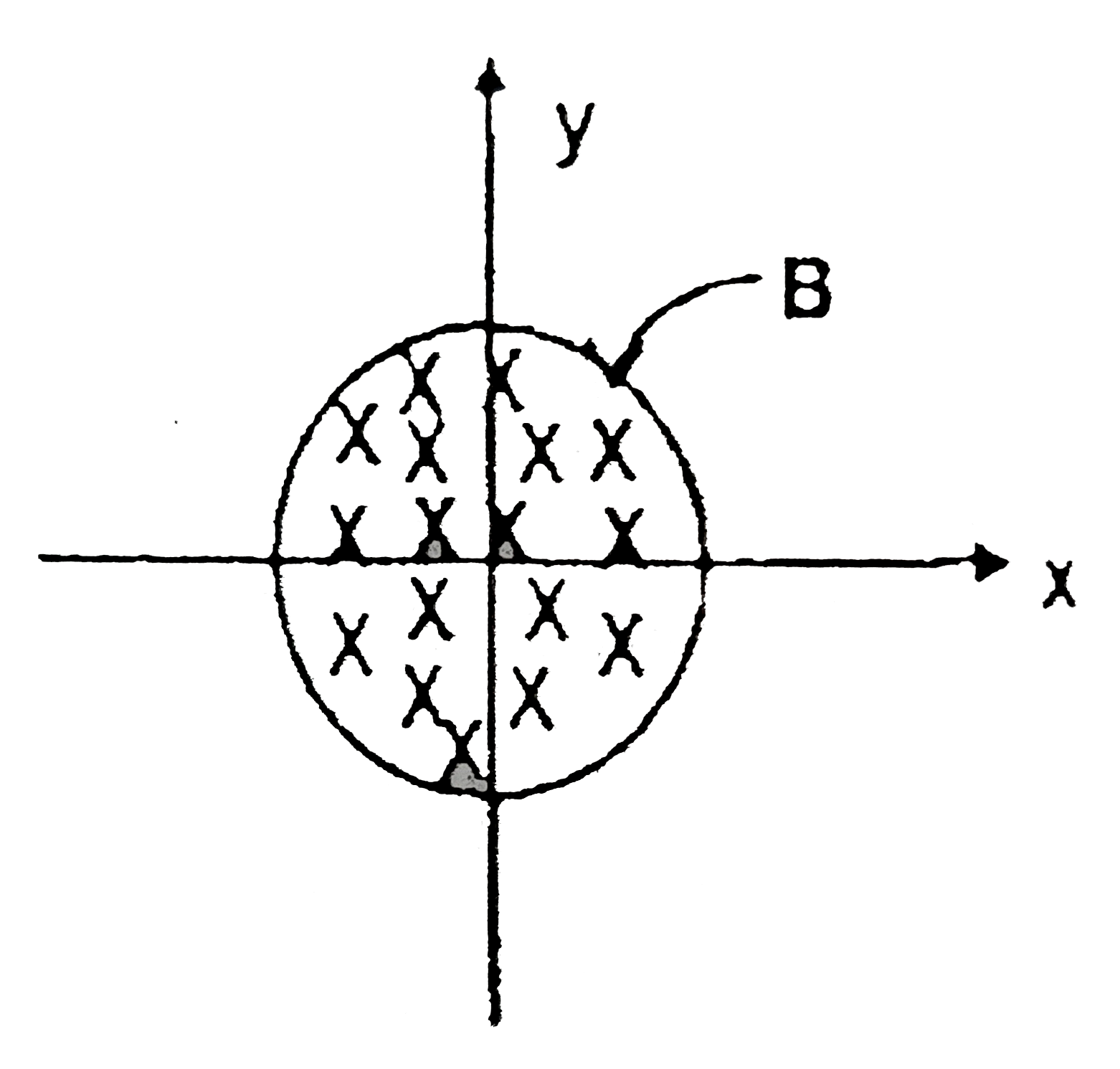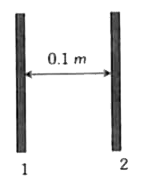Two insulting plates are both uniformly charged in such a way that the potential difference between them is V2−V1=20V. (i.e., plate 2 is at a higher potential). The plates are separated by d=0.1m and can be treated as infinity large. An electron is released from rest on the inner surface of plate 1. What is its speed when it hits plate 2? (e=1.6×10−19C, me=9.11×10−31kg)

7.02×1012m/s
1.87×106m/s
32×10−19m/s
2.65×106m/s
Step by step video & image solution for Two insulting plates are both uniformly charged in such a way that the potential difference between them is V_2-V_1=20V. (i.e., plate 2 is at a higher potential). The plates are separated by d=0.1m and can be treated as infinity large. An electron is released from rest on the inner surface of plate 1. What is its speed when it hits plate 2? (e=1.6xx10^-19C, m_e=9.11xx10^-31kg) by Physics experts to help you in doubts & scoring excellent marks in Class 12 exams.
Updated on:21/07/2023Topper's Solved these Questions
- ELECTROSTATICSBook:PHYSICS GALAXY - ASHISH ARORAChapter:ELECTROSTATICSExercise:Advance MCQs
Explore 40 Videos
- ELECTROSTATICSBook:PHYSICS GALAXY - ASHISH ARORAChapter:ELECTROSTATICSExercise:Unsolved Numberical Problems
Explore 73 Videos
- ELECTROSTATICSBook:PHYSICS GALAXY - ASHISH ARORAChapter:ELECTROSTATICSExercise:Conceptual MCQs single option correct
Explore 70 Videos
- ELECTROMAGNETIC INDUCTION AND ALTERNATING CURRENTBook:PHYSICS GALAXY - ASHISH ARORAChapter:ELECTROMAGNETIC INDUCTION AND ALTERNATING CURRENTExercise:Advance MCQs
Explore 33 Videos
- GEOMETRICAL OPTICSBook:PHYSICS GALAXY - ASHISH ARORAChapter:GEOMETRICAL OPTICSExercise:Unsolved Numerical Problems
Explore 107 Videos
Similar Questions
A ring with a uniform charge Q and radius R, is placed in the yz plane with its centre at the origin
View SolutionA small sphere is charged uniformly and placed at point A (u, v) so that at point B (8, 7) electric field strength is→E=(54ˆi+72ˆj) N/C and potential is+ 900V. Calculate:
(a) Magnitude of charge,
(b) Co-ordinates of point A, and
(c ) If di-electric strength ofair is 3×I06 V/m, minimum possible radius of the sphere.
View SolutionA soap bubble is given a negative charge, then its radius
View SolutionA loop is kept so that its center lies at the origin of the coordinate system. A magnetic field has the induction B pointing along Z axis as shown in the figure

View SolutionThe left end of a long glass rod of index 1.6350 is grounded and polished to a convex spherical surface of radius 2.50 cm. A small object is located in the air and on the axis 9.0 cm from the vertex. Find the lateral magnification.
View SolutionThe plates of a parallel-plate capacior are given equal positive charges .What will be the potential difference between the plates ? What will be the charges on the facing surfaces and on the outer surfaces ?
View SolutionTwo insulting plates are both uniformly charged in such a way that the potential difference between them is V_2-V_1=20V . (i.e., plate 2 is at a higher potential). The plates are separated by d=0.1m and can be treated as infinity large. An electron is released from rest on the inner surface of plate 1. What is its speed when it hits plate 2? ( e=1.6xx10^-19C , m_e=9.11xx10^-31kg )
View SolutionAn electron having charge e and mass m starts from the lower plate of two metallic plates separated by a distance d . If the potential difference between the plates is V , the time taken by the electron to reach the upper plate is given by .
View SolutionA uniformly distributed space charge fills up the space between two large parallel plates separated by a distance d. The potential difference between the plates is equal to zero ? What will then be the field strength near the other plate ?
View Solution(a) Find the potential difference between the plates of a parallel plate capacitor of capacitance 5muF if a charge +800muC is placed on one plate and- 200muC on another plate. (b) The charege given to plate are as shown. The capacitance between the adjacent plates is C . find the charge on outer surface of plate 3 , and potential difference between plate 1 and 2 . (c) If A is area of each plate and d is separation between adjacent plates, find the charge supplied by battery. (d) Five idential capacitor plates each of area A are arranged such that adjacent plates are at a distance d apart. the plates are connected to a source of emf V as shown. what is the magnitude and nature of charge on plates 1 and 3 respectively?
View SolutionA parallel -plate capacitor is connected to a battery that maintains a constant potential difference V between the plates. If the plates are pulled away from each other, increasing their separation, does the magnitude of the charge on the plates (a) increase, (b) decrease, or (c ) remain the same ?
View SolutionA parallel plate capacitor having plate area A and separation between the plates d is charged to potential V .The energy stored in capacitor is ....???
View SolutionTwo large conducting plates are placed parallel to each other with a separation of d between them. An electron starting from rest near one of the plates reaches the other plate in time t. If e is the charge on the electron and m is its mass, then the surface charge density on the inner surface is
View Solutionदो अचालक प्लेटें इस प्रकार समरूप आवेशित हैं कि उनके मध्य विभवान्तर [V2−V1=20V] ( अर्थात् प्लेट 2 उच्च विभव पर हैं ) प्लेटें d = 0.1m की दूरी पर स्थित हैं तथा अनंत आकार में व्यक्त हो सकती हैं | एक इलेक्ट्रॉन प्लेट 1 की आन्तरिक सतह पर विराम से छूटता है | प्लेट 2 को टकराते समय वेग होगा
(e=1.6×10−19C,me=9.11×10−31kg)

View SolutionTwo insulating plates arc both uniformly charged in such a way that the potential difference between them is V_(2) - V_(1) = 20V (i.e. plate 2 is at a higher potential). The plate are separated by d = 0.1m and can be treated as infinitely large. An electron is released from rest on the inner surface of plate 1. What is its speed when it hits plate 2 ? (e = 1.6xx10^(-19) C m_(e)= 9.11xx10^(-31) kg )
View SolutionThe plates of a parallel-plate capacior are given equal positive charges .What will be the potential difference between the plates ? What will be the charges on the facing surfaces and on the outer surfaces ?
View Solution

